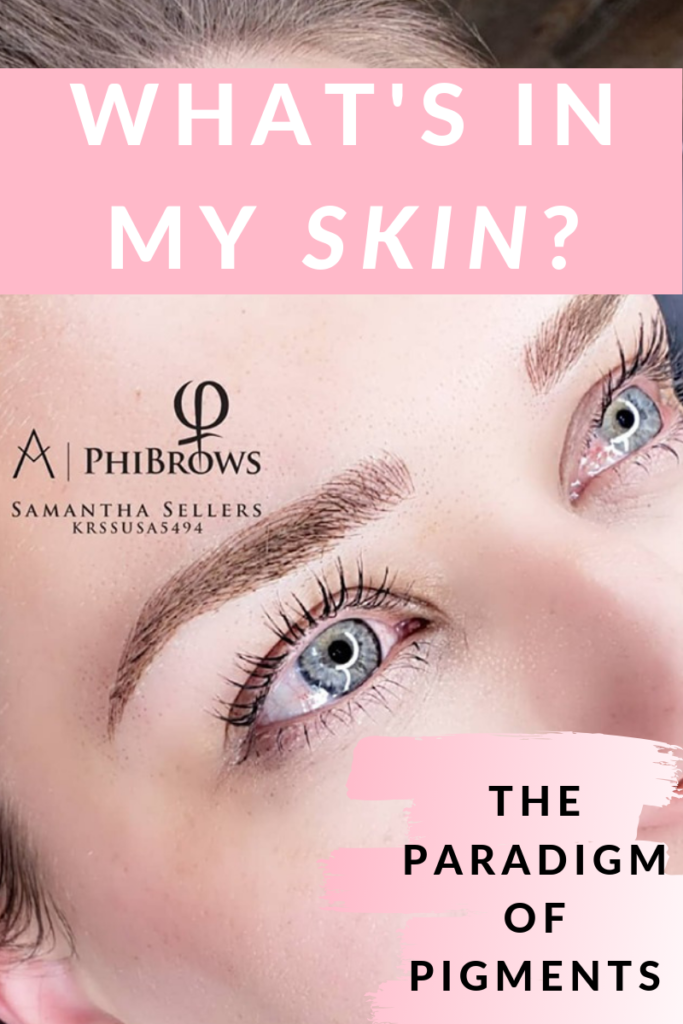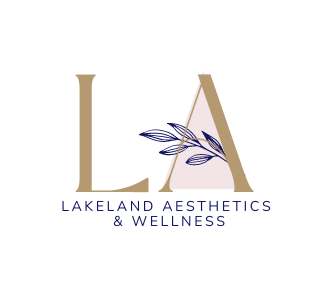A potential client sent me something and it reminded me of another client I had almost a year ago that told me of a similar reaction she had to the pigment used in her Microblading. I struggle with not saying anything and keeping my mouth shut like a good woman who supports other women, because quite frankly, I absolutely do. I love seeing other people succeed and be a pillar of inspiration to other women. But I feel a strong duty to care for others beyond what they are aware of. Being a nurse is both soft and strong; caring and cautious; teaching and learning. What does a nurse like me do? I choose to love, educate, and bring hard subjects to light in the best way without putting another person down. This was the message sent to me earlier this week:
Message from Client
“Also, I wanted to share something with you, I am an MRI tech and one of my coworkers had a patient who had a horrible reaction after only being exposed to the magnetic field of the MRI; she wasn’t even scanned😳😳!!! Just being in the magnetic field caused her eyebrows to burn…. Scary😓 and it wasn’t even the strongest magnet; it was the 1.5 Tesla, but we have 3.0 Tesla machines!”
Both my client and the potential client told me where the two different parties we are discussing had their eyebrows Microbladed, both by local artists in the Lakeland, Polk County area, not myself. It bothers me because this information is not new for me. In not putting down another artist, I think it’s important we discuss this true and VALID safety concern of having Microblading pigments with heavy metals in them for many reasons. Especially, for MRI’s that rely on magnetic resonance to perform necessary tests. If consumers knew about tattoo inks that contain heavy metals they would have the information needed to either proceed with the service they are paying for or decline that service to prevent the said issue. That is a choice every consumer should know AHEAD of having a service or procedure performed.
FDA’s Role
When I decided to research Microblading training in early 2017, I knew that I knew NOTHING about tattoos. Nothing. I knew nothing about the tools or ink used, and especially nothing about transforming an image into artwork on the body. But I did know that I was creative, meticulous, and I knew a lot about the human body. I know how it functions, its protective systems, and much more. When I began learning about tattoo ink, I learned that the FDA, 2015, “has not approved any inks for injection into your skin” and it does not regulate practices in tattoo parlors.
The only thing the FDA does do is monitor problems from tattoos and permanent make-up, as well as alerting the public when it becomes aware of the problem FDA, 2015).“>FDA
Furthermore, the FDA, 2015 states “The pigments used in the inks are color additives, which are subject to premarket approval under the Federal Food, Drug, and Cosmetic Act. However, because of other competing public health priorities and a previous lack of evidence of safety problems specifically associated with these pigments, FDA traditionally has not exercised regulatory authority for color additives on the pigments used in tattoo inks.” (FDA, 2015).
What Now?
So… Where does that leave us, consumers and technicians? I either say that, if that answer is good enough for the FDA, then it’s good enough for me and take advantage of that by claiming to use safe pigments from the first “expert Microblading artist” I talk to with no evidence to back that up, or I listen to the nurse in me that says this isn’t acceptable.
I chose to research beyond the USA and the FDA before I ever picked up my blade.
Regulation from other Countries
Out of all the countries in the world, I found Austria to be the only country that has legal provisions on Tattooing and Piercing, including microbiological and heavy metal safety. Can you hear the happiness in my voice when I say that Phibrows Microblading pigments are certified safe in Austria?! Branko Babic, the CEO and Creator of Phibrows is a forerunner in the efficacy and safety of Permanent Makeup pigments worldwide.
Seven EU countries (Sweden, Spain, Slovenia, Netherlands, Germany, France, and Belgium) have introduced national legislation based on the Council of Europe Resolution on the requirements and criteria for the safety of Tattoos and Permanent Make-up (ResAP, 2008).
I should also mention that while it’s no surprise that autoimmune diseases and allergen health risks have risen in recent years, it is something we should all be cautious of in the products we use every day and certainly the products that remain in our skin. Another component I love about the Phibrows Microblading pigments is that it is Tartrazine Free, making it HYPOALLERGENIC. This is important because Tartrazine (Yellow5 CI.19140) is used in many foods, cosmetics products, cleaning products, and more primarily for its yellow hue, (it can also be a bright blue or green depending upon other factors). Many people have reactions to this chemical and aren’t aware of it due to its symptoms ranging from of subtle to substantial. Many consumers might be unaware of Tartrazine, but many have heard that yellow dyes are bad news.
In 2008, the Council of Europe, listed 62 chemicals that should not be in Tattoo ink and Permanent Makeup products. Germany made it illegal for tattoo inks and pigments in their country to contain any chemicals on the Council of Europe’s list of substances banned in cosmetics. SIXTY TWO chemicals!! Ask me how many the FDA has banned? 11. That’s because “Under U.S. law, FDA does not have the authority to require cosmetic manufacturers to submit their safety data to FDA, and the burden is on FDA to prove that a particular product or ingredient is harmful when used as intended. We make these decisions based on reliable scientific information available to us. FDA can take other countries’ decisions into consideration, but we can only take action within the legal and regulatory framework for cosmetics in the United States.” (FDA, 2019). Meanwhile, Germany’s Meisner stated “What is not safe on the skin is not safe in the skin,” (Evert, 2016). Personally, I couldn’t agree more.
2019 FDA Warning
This year, on May 17, 2019, the FDA issued a safety advisory warning consumers, Tattoo and Microblading Artists, and retailers about using or selling certain tattoo inks contaminated with microorganisms. You can review that FDA Safety Advisory here.
With Microblading and Tattoo Artists being poorly regulated in training and educational competency requirements in many states, including Florida, it’s important to not only choose a good Microblading Artist based on skill, but it’s also important to know what products and pigments are being placed IN your face!
Phibrows Products & Tools
Phibrows Microblading pigments are Certified Heavy Metal Free, Certified Vegan, and Certified Cruelty Free. Additionally, they do not contain lead, Cadmium, Nickel, Mercury, Cobalt, or Tartrazine. They are mineral based and assimilate with the body’s natural molecular composition. Branko Babic has made it his mission to have the safest pigment with the most superior ingredients in the world. He has had his formula optimized 5 times and has independent third-party regulations, while following the strict guidelines from the European Union.
I do not endorse Phibrows Pigments because I am a Certified Phibrows Artist. I don’t have to and can choose any pigment I want to use. I endorse their pigments because they really are the best and safest in the world. I have a lot of Before and After photos of Microblading, but I also have a lot of Healed photos to show how well these pigments heal. If a better product comes out, I will use that. I choose to use the highest quality pigments available despite that they are the most expensive also. My clients and results are worth it!
Remember, as a consumer you have every right to know the education and competency someone has before performing a service on you, as well as knowing what products, tools, and ingredients they will be using beforehand. Also, ask your artist to see HEALED results of their work as that is truly what you should judge a Microblading Artist on.
If you have ever thought about having Microblading, have concerns, or wonder what it will look like, our Registered Nurse and Certified Phibrows Artist in Lakeland, FL offers FREE Consultations where you can see what the Divine Ratio 1.618 looks like on your beautiful face and will provide you with all the information you need to make an informed and safe decision. When done correctly and safely, Microblading can change your everyday life for the better.
References
(2015). Fda.gov. Retrieved 6 August 2019, from https://www.fda.gov/media/93379/download
(2008). ResAP. Retrieved 6 August 2019, from https://search.coe.int/cm/Pages/result_details.aspx?ObjectID=09000016805d3dc4
Everts, S. (2019). What chemicals are in your tattoo? | August 22, 2016 Issue – Vol. 94 Issue 33 | Chemical & Engineering News. Cen.acs.org. Retrieved 6 August 2019, from https://cen.acs.org/articles/94/i33/chemicals-tattoo.html
Avoid Certain Tattoo Inks Contaminated with Microorganisms. (2019). U.S. Food and Drug Administration. Retrieved 6 August 2019, from https://www.fda.gov/cosmetics/cosmetics-recalls-alerts/fda-advises-consumers-tattoo-artists-and-retailers-avoid-using-or-selling-certain-tattoo-inks
Prohibited & Restricted Ingredients in Cosmetics. (2019). U.S. Food and Drug Administration. Retrieved 6 August 2019, from https://www.fda.gov/cosmetics/cosmetics-laws-regulations/prohibited-restricted-ingredients-cosmetics



